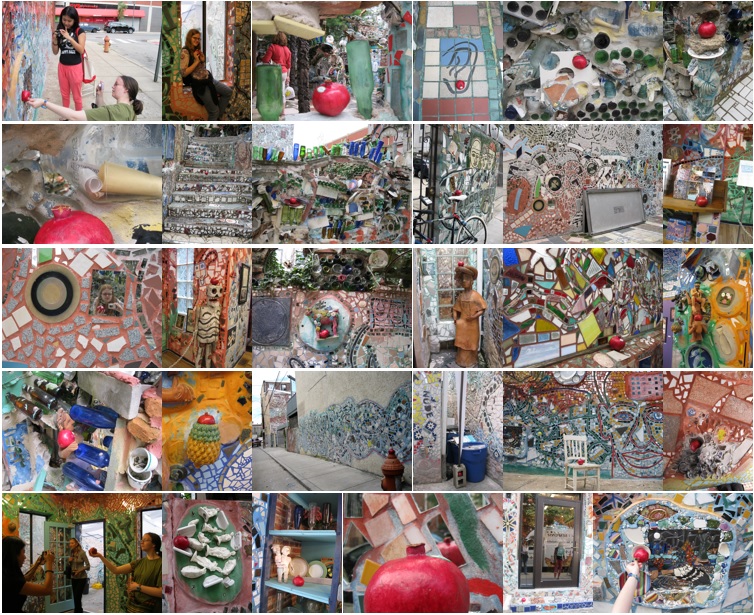Serendip is an independent site partnering with faculty at multiple colleges and universities around the world. Happy exploring!
Play in the City 2013

|
|
Welcome to the on-line conversation for Play in the City, an Emily Balch Seminar offered in Fall 2013 @ Bryn Mawr College, in which we are addressing the question of how we construct, experience, and learn in the act of play. How is play both structured by the environment in which it occurs, and how might it re-structure that space, unsettling and re-drawing the frame in which it is performed? This is an interestingly different kind of place for writing, and may take some getting used to. The first thing to keep in mind is that it's not a site for "formal writing" or "finished thoughts." It's a place for thoughts-in-progress, for what you're thinking (whether you know it or not) on your way to what you think next. Imagine that you're just talking to some people you've met. This is a "conversation" place, a place to find out what you're thinking yourself, and what other people are thinking. The idea here is that your "thoughts in progress" can help others with their thinking, and theirs can help you with yours. |
Who are you writing for? Primarily for yourself, and for others in our course. But also for the world. This is a "public" forum, so people anywhere on the web might look in. You're writing for yourself, for others in the class, AND for others you might or might not know. So, your thoughts in progress can contribute to the thoughts in progress of LOTS of people. The web is giving increasing reality to the idea that there can actually evolve a world community, and you're part of helping to bring that about. We're glad to have you along, and hope you come to both enjoy and value our shared explorations. Feel free to comment on any post below, or to POST YOUR THOUGHTS HERE.

10 minutes of research 2: John Cage
John Cage's work is really important to me. In addition to introducing "chance operations" into his work, his Zen-influenced attitude towards making art and living in the world have inspired and emboldened a lot of my play in the worlds of theater and dance.
In this video, which is from a 1960 American TV show called "I'VE GOT A SECRET," American celebrities of the time play a game of trying to figure out what a "mystery guest's" secret is. So there's the American TV game to see (in all its hokey splendor), but also John Cage's compositon, which I find delightful for how seriously it takes play.
If this isn't embedded, visit it at http://www.youtube.com/watch?v=SSulycqZH-U

10 minutes of research 1: Henri Matisse
Flanagan describes Henri Matisse as a "traditional artist" and I want to register my disagreement. His painting so offended the mainstream critics of his day that they referred to it as "fauvism," the work of "wild animals." Although he used paint and canvas, his strategies for representation were wildly opposed to the impressionists, whose pretty canvases his playfully oppose.
Consider this painting of his wife and its play with color.
http://ayay.co.uk/background/paintings/henri_matisse/portrait-of-the-green-stripe/

Sophie Taeuber-Arp
Her collection:
http://www.moma.org/collection/artist.php?artist_id=5777
video:
http://www.youtube.com/watch?v=vvwFuwOdkzE
from wikipedia:
In 1915, at an exhibition at the Tanner Gallery, she met the Dada artist Jean Arp, with whom she was to collaborate on numerous joint projects until her death in 1943. They married in 1922 and she changed her last name to Taeuber-Arp.
...
During this period, she was involved in the Zürich Dada movement, which centered on the Cabaret Voltaire. She took part in Dada-inspired performances as a dancer, choreographer, and puppeteer; and she designed puppets, costumes, and sets for performances at the Cabaret Voltaire as well as for other Swiss and French theaters. At the opening of the Galerie Dada in 1917, she danced to poetry by Hugo Ball wearing a shamanic mask by Marcel Janco. A year later, she was a co-signer of the Zurich Dada Manifesto.

Hannah Hoch
Hannah Hoch was a German photocollage artist and part of Dada art movement in Europe. The Dada art movement was in responce to World Word I. During World War I Hoch wad a nurse with the Red Cross. Hoch was one of the orginators of photocollage art along with Raoul Hausmann. Her work mainly features women and machine parts.


New Games Movement

"Play Hard, Play Fair, Nobody Hurt." This is the central philosophy of New Games Movement. One of its founders was Stewart Brand, well known for being the editor of the Whole Earth Catalog. It started in the late 1960s and became popular a decade later. I found the principles of this movement fascinating, because one of them proposed that although play included competition, winning or losing in the end was not important. Also, the movement pursued to replace competitive sports with cooperative games. The game "Slaughter" would be a good example. In this game, people on the winning side were encouraged to change to the losing side, ensuring there were no winners or losers. This is a really interesting idea.

Some information about Dada
The word ‘Dada’ is strange for me. When I read it, the word seems meaningless and is onomatopoetic. After I read the article, I found some information about this movement. I’m interested in the link between art and the war. Artists who started Dada wanted to use this movement to express their feeling, their weariness and horror against the WW1. Those people worked against the main stream, because they thought the main stream thoughts reflected the ideas of persons who caused the war. The attitude was negative to everything. They gave up the logic, and wanted to destroy. The obvious person in the movement I noticed is Hannah Hoch, a German Dada artist. Actually at that time, many male members in the movement believed ‘paid lip service to women's emancipation’, it was not easy for her to take part in. In her work, she expressed not only the idea of Dada, but also the idea of feminism.
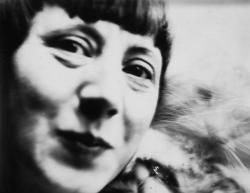
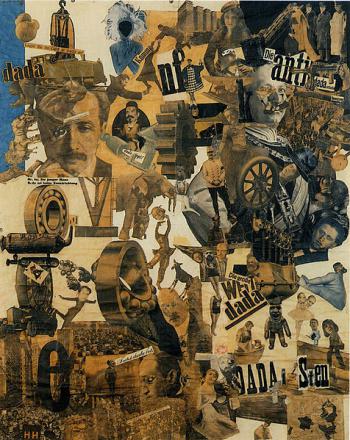

Surrealism - The How of Why
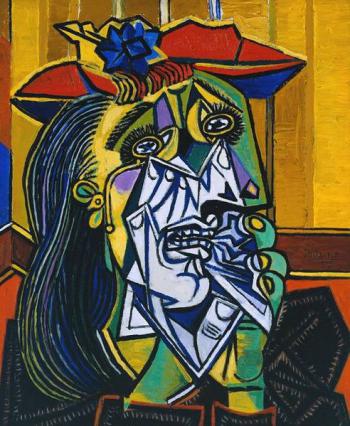 Surrealism and impressionism are my two favorite art movements to date. Whilst on my grad trip to London with my best friend, I saw one of Picasso's Weeping Woman pieces in the flesh (or canvas). Up close, you could feel her sorrow without knowing where her sorrow stems from. I believe this is achieved through the jagged edges and the dichotomy of the black/white portion and the rich color around it. It is both beautiful and emotionally raw.
Surrealism and impressionism are my two favorite art movements to date. Whilst on my grad trip to London with my best friend, I saw one of Picasso's Weeping Woman pieces in the flesh (or canvas). Up close, you could feel her sorrow without knowing where her sorrow stems from. I believe this is achieved through the jagged edges and the dichotomy of the black/white portion and the rich color around it. It is both beautiful and emotionally raw.
Surrealism grew in out of the Dada (or anti-art) movement during World War I. Interestingly, Sigmund Freud helped foster the movement whilst studying patients suffering from shell-shock. André Breton worked with Freud and was fascinated with his dream analysis and the concept of liberating the imagination. In dreams, we unconsciously and randomly mix events, thoughts, voices, etc. that we've seen throughout the day. Our brain tries to make sense of them by making a story out of them. Breton loved this idea, and so did his followers: Juxtaposing things that normally might not have anything to do with each other, and then trying to find a meaning to it.
Breton and his followers created the Surrealist Manifesto in 1924 and the movement took off. It melted into other areas of culture, such as political thought and social theory. While the heyday of surrealism was in the 1930's, the movement is still evolving.

Research based on Critical Play
After reading "Critical Play", I did ten minutes of research on Dada art. I remembered enjoying learning about it in a High School Art History class, and seeing the name again in the reading piqued my interest. I enjoyed reading about how the artistic movement occured as a result to World War I, and the nationalistic tendencies that led to the war. I also learned how Dada artists opposed all norms, including Dadaism itself, and many Dada artists proclaimed "Dada is anti-Dadaism". Dadaism was the rejection of artistic and cultural authority, and consisted mainly of a group of artists asking "what is art?". My favorite Dada artist is Marcel Duchamp, who is famous for many pieces, including "fountain", a sculpture which he created by turning a urinal on its side. Duchamp rejected all painting because he believed it to be made for the eye, rather than the mind. He showed this rejection in his general medium use of sculpture, but also in a piece he made, in which he drew a moustache on a print of Leonardo da'Vinci's "Mona Lisa". He named this piece "L.H.O.O.Q", which, in French, means something along the lines of "she has a hot @$$". This defacement of such a famous artwork shows the "in your face" attitude of the Dada movement.



Another Life in A Virtual World
Like tomahawk mentioned, Flanagan's passage made me remember of a ted talk one of my friend's made back in highschool of the effect of videogames. Personally, I'm not a videogamer neither and I wasn't really a fan of people playing videogames either. My brothers and sister play and never seem to take interest in any physical activity, which really annoyed me. I never grasped why most people loved playing videogames. Medrano, my friend explained, like Flanagan, that videogames are a way for people to escape reality and become people they've always hope to become or wish to become. It's a virtual world created for people to escape the stress and frustration and relax. In the real world, we can't become the top gansters of L.A. and get every cute girl, but in L.A. Noire, we most definitely can. In SIMS, we play another life, no violence, no physical activity, simply participate in another life through a virtual world. Videogames are essential, although most people consider it pointless, they're a way for people to cope with stress and live a virtual different life.

Allan Kaprow
While looking through Chapter 5 of Critical Play by Mary Flanagan I became interesed in an artist who was mentioned only briefly. His name is Allan Kaprow and it is his work that coined the term Happening, something we all experienced a few weeks ago.
A Happening is a work that is shaped through audience participation. It creates a narrative through interactions of the participatnts and the Environment. The Environment is the space where the work occurs that encompasses everything that is needed for the work- people need only enter for it to begin.
Kaprow's most famous work is "18 Happenings in 6 Parts". Reading about this work reminded me of "The Quiet Volume". It involves participants moving through a series of three rooms while following the direcctions written on three cards and the sound of bells to indicate when to move on.



"Gaming can make a better world"
The Introduction to Flanagan's "Performative Games and Objects" reminded me of this ted talk. Check it out if you've got some spare time!
http://www.ted.com/talks/jane_mcgonigal_gaming_can_make_a_better_world.html

Doors
sorry about the image quality, I've been having a hard time loading my pictures. I'll bring it to class but until then, a description will have to do. As we were walking through the city, I became really enamoured of all of the different doors, so I ended up splicing them together into one big mosaic. I particularly enjoyed the doors that seemed out of place (ie the ones that were in the middle of mosaics), and the disguised doors hidden my their surroundings.
(PS sorry this is so late, the website crashed,, and I didn't get the chance to upload before class this morning)

Mosaic of a Garden
Here is my mosaic; please let me know if it is not visible. Serendipity has been giving me lip when I try to upload photos.
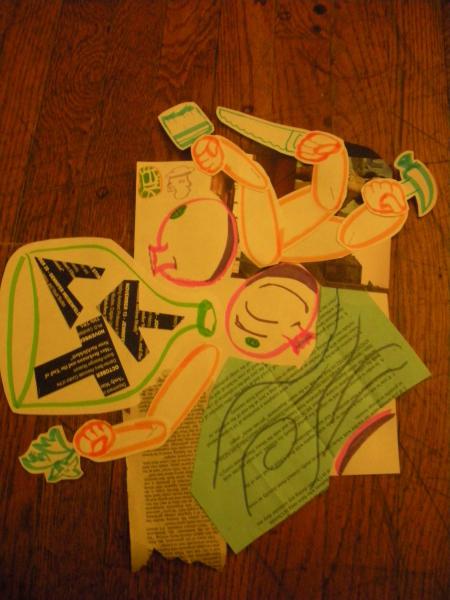

People are part of mosaic
(Last night when I tried to upload the webpage was unavailable.)
People are a part of mosaic.
The background is seeing the magic garden through the gaps in the mosaic wall in front of my eye.
In the center is my reflection in the pieces of mirror on the mosaic wall.
Other three are pictures of people making mosaic more interesting and dynamic.

I am the mosaics
My time in the Magic Gardens seemed like a blur, a mesh of everything mixed together. I didn't remember many specific things, just a mass of beauty. So I put all these pictures together, upside down, sideways, every way possible, which was as close as I could get to a visual representation of my thoughts while there. I felt like I was part of the art of the Gardens while I was in them, so it seemed fitting to place a picture of myself reflected back in some of the mirrors front and center.



 "The interstices or gaps between the
"The interstices or gaps between the
